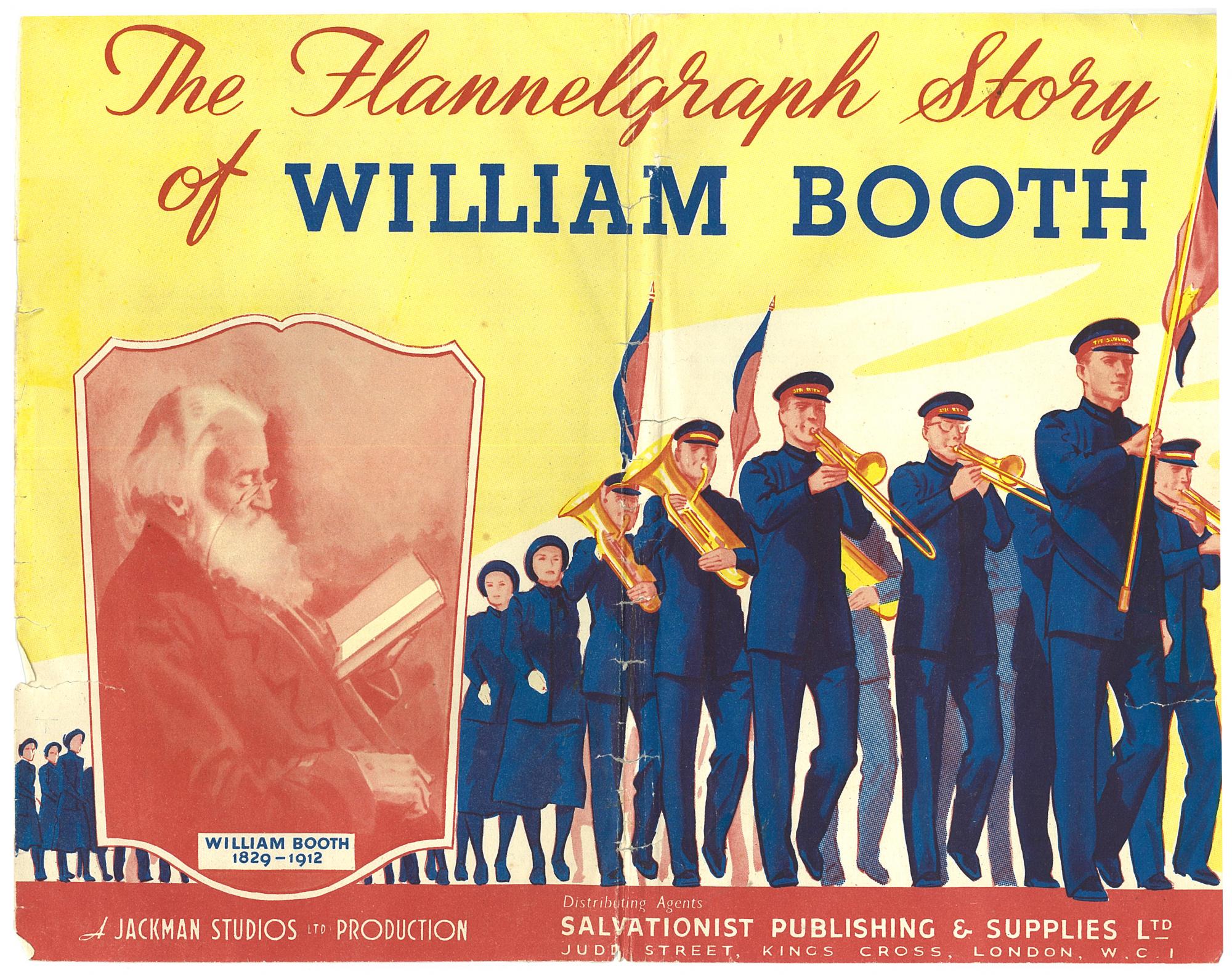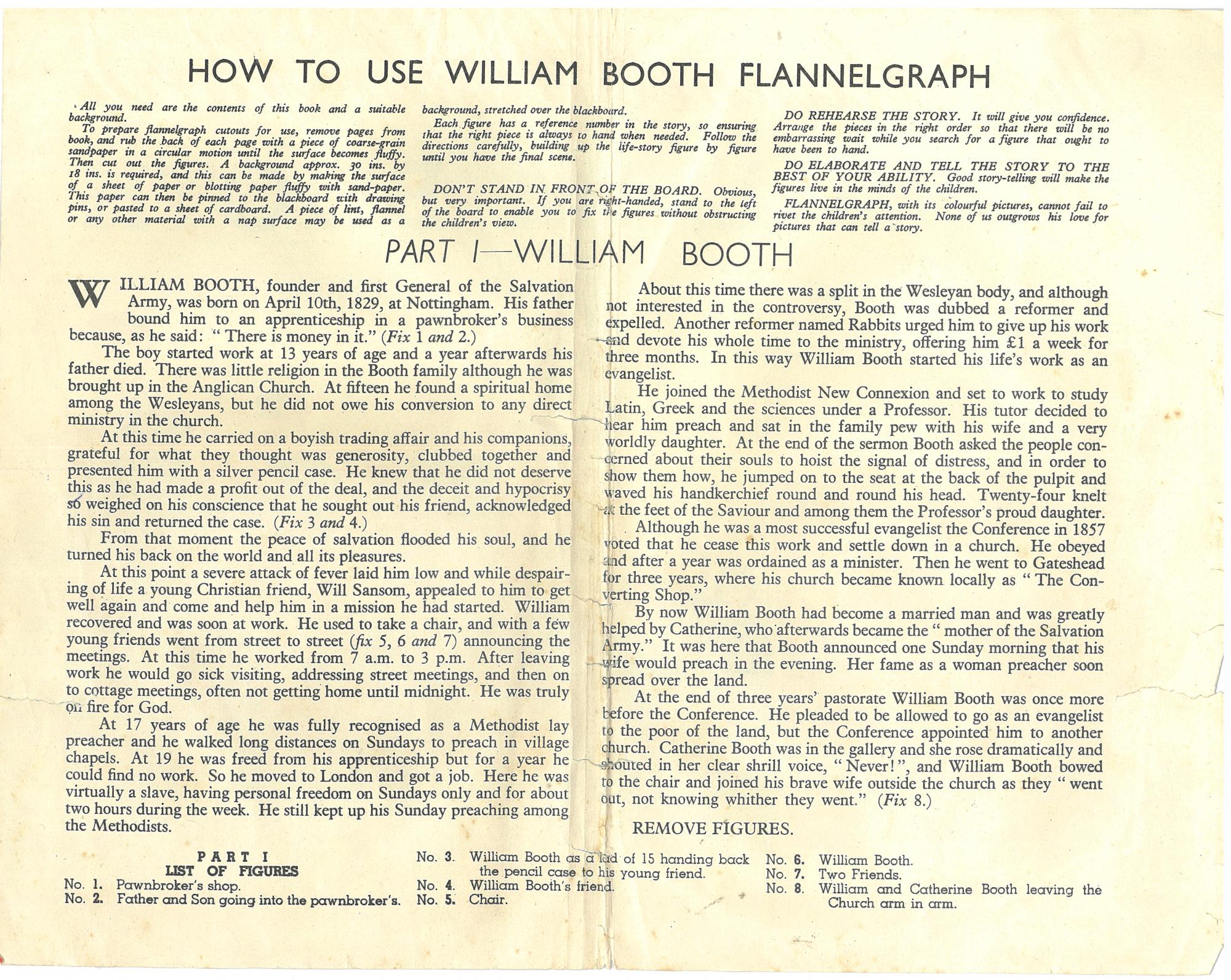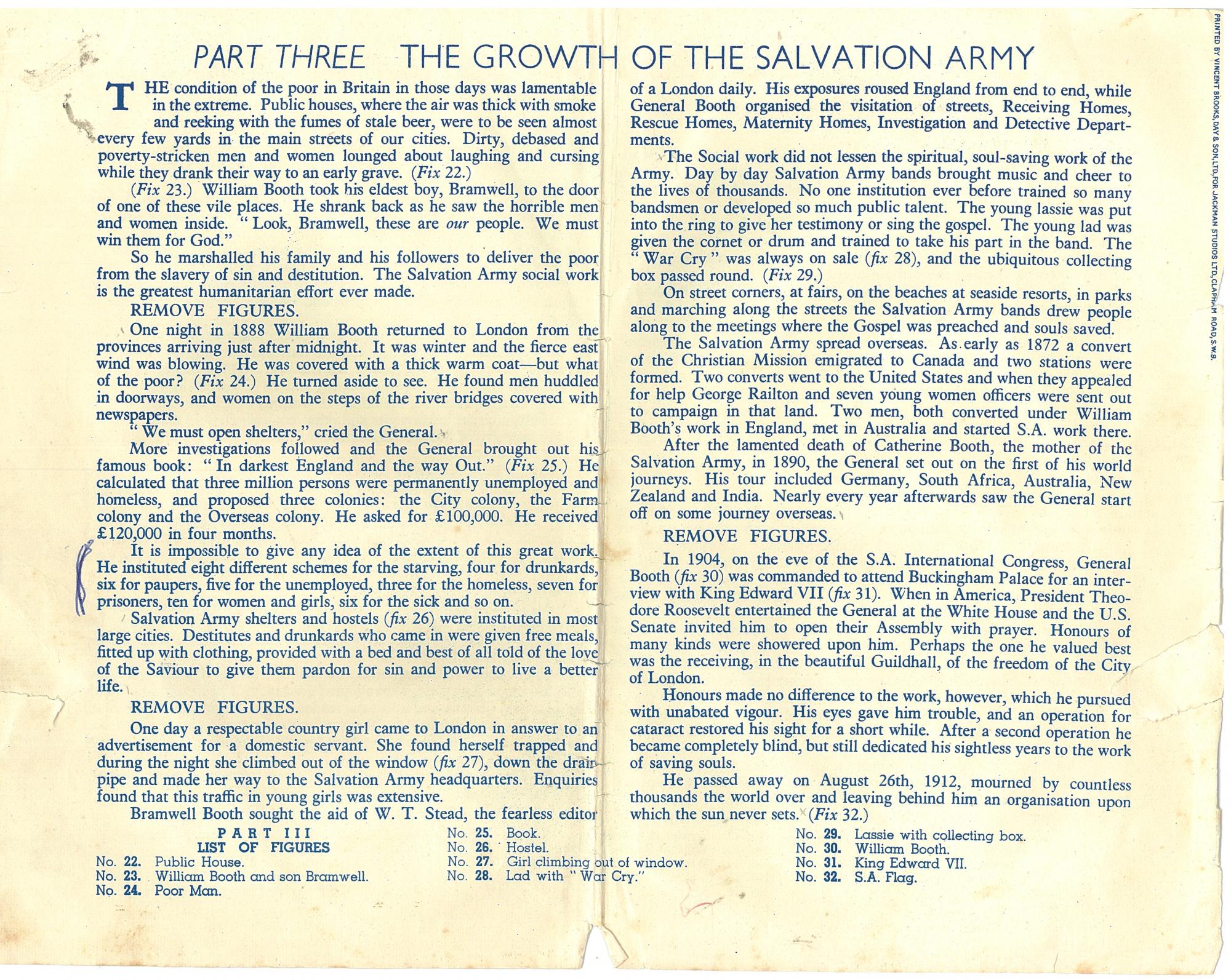You are here
Founders' Day and Flannel Graphs




William Booth, founder and first general of The Salvation Army was born in Nottingham, England on 10 April 1829.
As a young boy his father put him into an apprenticeship as a pawnbroker.
He moved to London as a young man preaching with the Methodists and was ordained as a minister.
His church in Gateshead became known as The Converting Shop.
Now married to Catherine, one Sunday night William Booth announced that she would speak in church.
This was the start of her platform ministry and her fame as a preacher soon spread.
Although desperate to become an evangelist, the Methodist Conference appointed him to another church. Catherine was in the gallery and rose dramatically from the balcony and shouted
"NEVER!".
William Booth bowed to the Chair and joined his brave wife outside the church.
In June 1865, after being a travelling evangelist for 3 years, Booth was in Whitechapel London. He saw a mission group evangelising outside the Blind Beggar pub. When they asked him to speak, his commanding figure and forceful words challenged those listening.
Involved in several evangelical missions he foundered The Christian Mission.
In 1878 when discussing its role with his son Bramwell and George Railton, Railton wrote, “The Christian Mission is a volunteer army.”
William Booth took a pencil crossed out ‘volunteer’ and wrote “The Christian Mission is a Salvation Army.”
The Salvation Army got its name.

Flannelgraphs were used in Sunday Schools to tell Bible stories in the twentieth century.
The flannel board often had a backdrop depicting the story’s scenery.
Flannel backed paper cut outs were placed on the board and moved on and off the board as the story was told.
Flannelgraph as a medium is still used today, and pictures and lesson guidelines can be purchased.
This flannelgraph story depicts a section from the life of William Booth, the first General of The Salvation Army, dates from c1930 -1940s and is held in The Salvation Army’s Archives collection.
*The recorded text for the flannelgraph of William Booth's life story was summarised directly from the information and story directions supplied in the historic booklet accompanying this original flannelgraph story.


